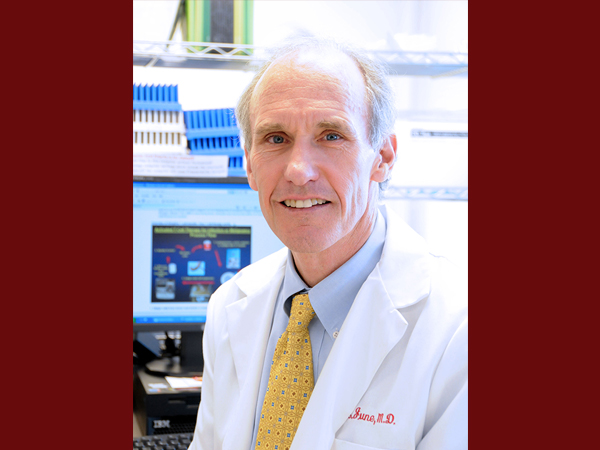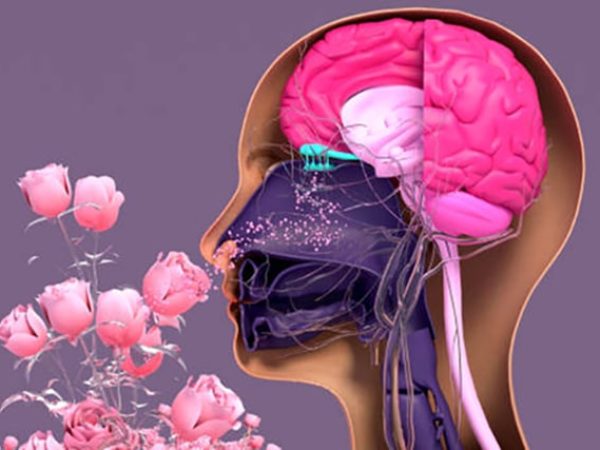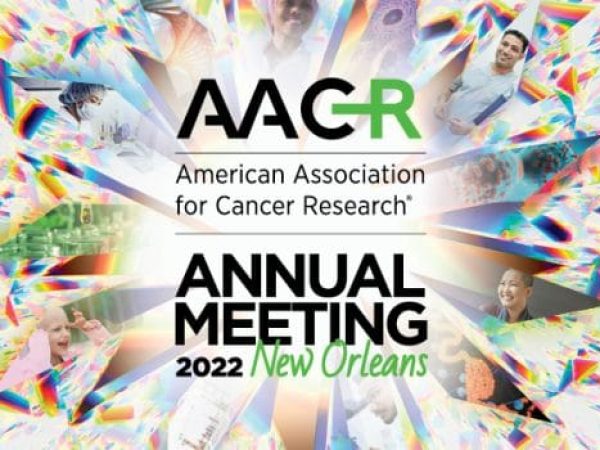How Chemical Probes Can Boost Cancer Research
 Guest post by David Uehling, PhD
Guest post by David Uehling, PhD
Ontario Institute for Cancer Research, on behalf of the Chemistry In Cancer Research Working Group, part of the American Association for Cancer Research (AACR).
The quest for a new cancer drug often begins when a protein target is implicated as an important driver in tumorigenesis. For cancer researchers, small molecules that block or stimulate such proteins can be valuable tools in research. Not only do they help us understand the role that the protein plays in cancer biology, but they also enable researchers to demonstrate which tumors are sensitive toward inhibition or stimulation with that protein target of interest, providing early clues as for patient selection and biomarker identification. Moreover, the knowledge that a small molecule can bind to such a protein builds confidence that this target is indeed “druggable,” which can provide a powerful stimulus to initiate a sustained effort to find medicines for that target.
Chemical probes are small, drug-like molecules that are useful in interrogating biology in disease models. In order for a probe to truly be useful it must have some critical characteristics. First, it must have the ability to fully engage the target in a cell at low concentrations. Second, it must be selective enough against the protein of interest to build confidence that the cellular phenotype being measured (such as tumor growth inhibition) is actually caused by hitting that target rather than one or more other targets. Finally, it must be chemically stable and unreactive in the context of the experiments for which it is used. A compound may be perfectly able to bind to a target of interest in a biochemical assay, but because it is reactive it either breaks down to an inactive species, or, even worse, reacts with other proteins to confound the interpretation of the experiment.
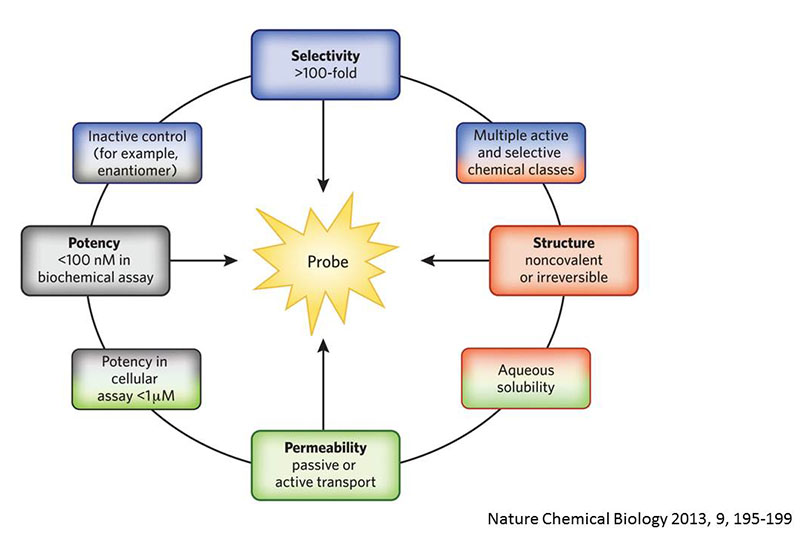
Despite the high value that quality probes bring to the cancer research community, the published literature is full of examples where small molecules have been inadvertently misused in research. In most of these instances, the chemical tool itself fails to meet some or all of the above criteria, leading to misleading or completely erroneous fundamental conclusions about the biological target. In other cases, while the probe used might be adequate for some applications, it was used in an inappropriate manner, such as being tested at too high of a concentration, leading to off-target effects. This misuse of chemical probes can be a setback to cancer research due to erroneous conclusions about basic biology and/or the validity of a potential cancer target. Indeed, in some instances, such misuse has even led to poorly conceived and executed clinical trials.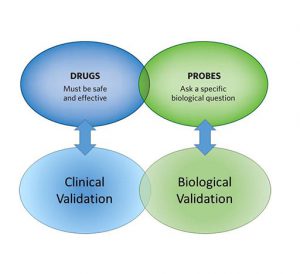
Fortunately, not only is there greater awareness of the issues around the appropriate use of chemical probes, but there are also emerging resources available to help cancer researchers identify and obtain quality chemical probes for their research needs. Among these resources, a group of experts and organizations, including the Structural Genomics Consortium, the Wellcome Trust, and the University of North Carolina have sponsored a wiki-like site called Chemical Probes.org. This site offers a convenient portal to browse probes against known targets that have been “rated” by experts. New probes are continually being added, and many of the targets of these molecules are well-validated or of strong interest in oncology.
The AACR Annual Meeting 2017, to be held April 1-5 in Washington, D.C., will feature an educational session titled, “From Chemistry to the Clinic: Part 1: Chemical Probes in Identifying and Validating Drug Targets.” What’s more, as part of its mission to highlight the critical role of chemistry in the treatment of cancer, the AACR’s Chemistry in Cancer Research (CICR) Working Group has also developed a resource on chemical probes in cancer research. This site offers “one-stop shopping” to cancer researchers and manuscript reviewers alike to help guide them in the proper choice and use of chemical probes in cancer research. In addition to providing help in understanding chemical probes themselves, this resource also provides links to help understand some of the assay formats used to characterize chemical probes.
The site includes the names of specific contacts who are willing to serve as experts to advise you on your questions on use or characterization of chemical probes. If these researchers are not able to answer your question, they can at least point you in the right direction when it comes to the use of chemical probe compounds in cancer research, so we encourage all cancer researchers to consider this resource.
Also, do consider joining CICR to learn about and help influence the role chemistry plays in cancer research. You can join by select CICR on your AACR dues invoice, or by emailing [email protected].
David E. Uehling obtained a PhD in synthetic organic chemistry under the direction of Professor Clayton Heathcock. He then served as a postdoctoral researcher in the laboratories of Professor Stuart Schreiber at Yale and Harvard University. He worked for GlaxoSmithKline for approximately 19 years in a number of therapeutic areas, particularly oncology and metabolic diseases. Since 2009, he has pursued oncology drug discovery at the Ontario Institute for Cancer Research, leading efforts to progress and help validate early stage projects. His current interests include kinase, protein-protein interaction, and epigenetics targets related to oncology.
The AACR’s Chemistry in Cancer Research Working Group (CICR) advocates the critical role of chemistry in the treatment of cancer through increasing chemistry awareness, knowledge, and capabilities of those invested in cancer research. This is accomplished by enhancing communication among researchers who share a passion for chemistry in cancer research; educating, informing, and augmenting chemistry knowledge and capabilities in cancer research through AACR programming; and supporting the needs and development of current CICR members while growing new membership.

